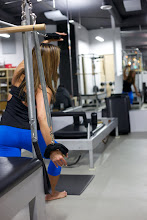 the thoracic diaphragm (or simply “diaphragm”) is the primary and most unique umbrella-like shaped muscle for respiration that lies between the thoracic (chest) and abdominal cavities. while difficult to perceive in the body at times, it is also a very important muscle in with respect to exercise, posture and in daily existence. what does this ultimately mean for your workouts? it means that because of its distinctive positioning, this muscle also affects your core conditioning.
the thoracic diaphragm (or simply “diaphragm”) is the primary and most unique umbrella-like shaped muscle for respiration that lies between the thoracic (chest) and abdominal cavities. while difficult to perceive in the body at times, it is also a very important muscle in with respect to exercise, posture and in daily existence. what does this ultimately mean for your workouts? it means that because of its distinctive positioning, this muscle also affects your core conditioning. the diaphragm’s muscle fibers attach to bones at inner surface of our bottom six ribs, at the front of the body at the sternum and at the back of the body at lower vertebrae. these muscle fibers converge at the central tendon which is attached to the connective tissue that surrounds the lungs. during inhalation and exhalation, the diaphragm (along with the muscles of the ribs) contracts and expands to create a suction to draw fresh oxygenated air into the lungs and then returns to its original shape to expel used air.
with respect to core muscles, the diaphragm is also connected to the postural muscles such as the transverse abdominus (your body’s own built in corset/weight belt), quadratus lumborum (back stabilizers) and iliopsoas (the hip flexors), creating an “upper roof” for these core muscles. its contraction not only affects lung capacity, but also affects the pressure in the abdominal wall and the activity of the abdominal muscles! so, you see, your breathing is indeed affected by your posture and vice versa. when we are aware of the diaphragm and consciously integrate our breathing into our workouts, we are maximizing its function and collaboration with our entire core.
when your fitness instructors remind you about your posture in cycling class or suggest ways in which you can manipulate your breath in yoga or pilates classes, it is more than just what it might seem. they are asking you to condition your core muscles by mobilizing one of the most influential muscles in respiration, posture and core abdominal conditioning. so listen carefully to what they say and key in to what your body is doing on the inside and out. with this focus, you will be able to find this important muscle and get it to work for you!
